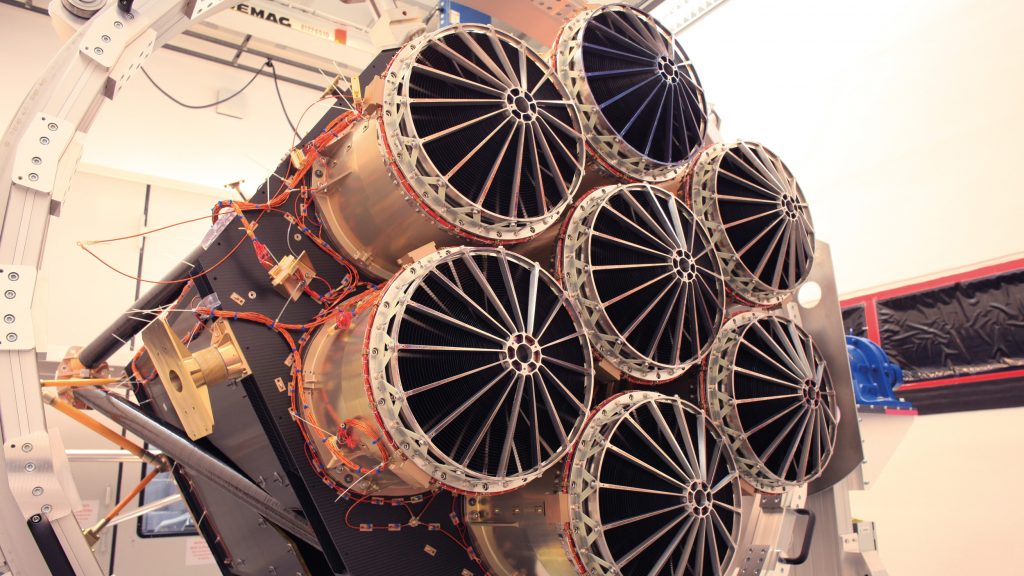Hunting for Dark Energy
Since the Big Bang, the Universe has been expanding. This expansion should actually be slowed down by the gravity of matter. But driven by Dark Energy, the expansion is accelerating. The physical phenomenon ‘Dark Energy’ is largely unexplained. The German X-ray telescope eROSITA (extended Roentgen Survey with an Imaging Telescope Array), which is being built under the auspices of the Max Planck Institute for Extraterrestrial Physics in Garching, will shed light into the darkness. The project is supported by the DLR Space Administration with funds from the German Federal Ministry for Economic Affairs and Energy (BMWi).
How can Dark Energy, which is invisible and only noticeable on vast distances, be investigated with an X-ray telescope? The key to this is galactic clusters – groups of up to several thousand individual galaxies. They attract the surrounding hydrogen gas, which, when it flows in, becomes so hot that it emits X-rays, and thus becomes visible to eROSITA. eROSITA will study the distribution of approximately 100,000 galaxy clusters. By determining the distribution of galaxy clusters in space, astronomers can not only determine the structure of the Universe today, but also in the past – because of the gigantic distances involved. This distribution was shaped by the nature of Dark Energy, whose properties can be deduced from the observations. To discover galactic clusters, eROSITA will scan the entire sky multiple times, observing many other phenomena and objects, such as active galactic nuclei, supernova remnants or X-ray binaries.
Far away from Earth, the seven-eyed telescope is the primary instrument of the German-Russian satellite mission ‘Spectrum-Roenten-Gamma’, which from 2019 will systematically scan the sky for X-ray sources. With special X-ray CCDs made of high-purity silicon cooled to minus 90 degrees Celsius and a mirror system composed of 378 galvanically replicated, thin-walled, gold coated X-ray mirror shells, eROSITA optimally exploits the sparse incident X ray light from the Universe and also permits detailed spectral analyses.
German Aerospace Center (DLR)
Thomas Mernik · E-Mail: thomas.mernik@dlr.de · DLR.de/en
